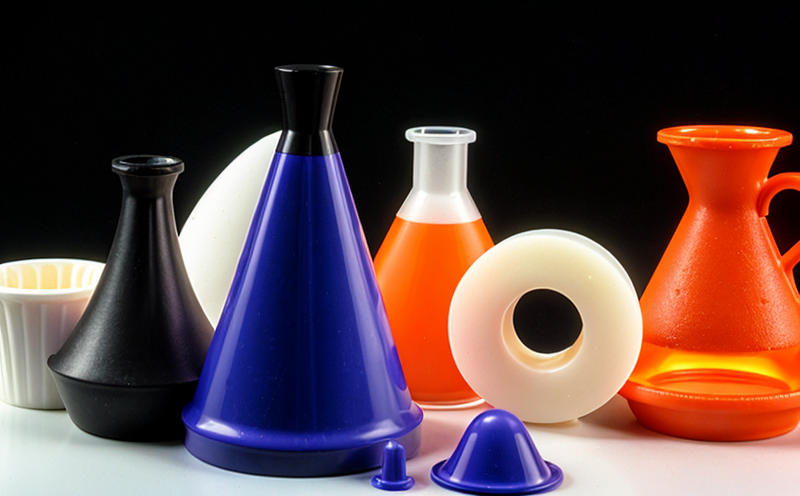Elastomer Additive Testing
Understanding elastomers and their additives is crucial in industries that rely on rubber-like materials for resilience and flexibility. Elastomer additive testing plays a pivotal role in ensuring the quality, performance, and safety of these materials across various sectors including automotive, electronics, medical devices, and construction. This service involves a comprehensive suite of tests aimed at evaluating the effectiveness and compatibility of additives within elastomers.
The primary goal is to assess how well an additive enhances specific properties such as durability, thermal stability, electrical insulation, or resistance to environmental factors like ultraviolet light and chemical exposure. For instance, in the automotive sector, proper additive testing ensures that rubber components can withstand extreme temperatures and harsh conditions without degradation.
Our laboratory utilizes advanced analytical techniques including differential scanning calorimetry (DSC), Fourier transform infrared spectroscopy (FTIR), and gas chromatography-mass spectrometry (GC-MS) to analyze the composition, structure, and behavior of elastomers under different conditions. These methods allow us to identify trace elements or impurities that could affect performance.
Testing also encompasses mechanical property evaluation through tensile tests, hardness assessments, and dynamic mechanical analysis (DMA). These evaluations provide insights into the physical characteristics like elasticity modulus, elongation at break, and tear strength which are critical for ensuring product reliability. By conducting these thorough analyses, we ensure that our clients receive accurate data to make informed decisions about their materials.
Real-world applications of elastomer additive testing include verifying compliance with international standards such as ISO 18745:2016 concerning the thermal aging of rubber compounds containing antioxidants. Compliance is essential for maintaining product quality and avoiding non-conformance penalties which can lead to costly recalls or market withdrawals.
Our service covers not only standard additive evaluations but also custom testing tailored to specific client needs. This flexibility allows us to address unique challenges faced by different industries, providing solutions that cater directly to their operational requirements. For example, in the medical device industry, we might focus on biocompatibility and stability under physiological conditions.
Applied Standards
| Standard | Description |
|---|---|
| ASTM D1936 | Determination of the oxidative stability of rubber compounds containing antioxidants. |
| ISO 18745:2016 | Thermal aging of rubber compounds containing antioxidants. |
| EN 13469-2 | Determination of the heat aging resistance of rubber materials (Part 2). |
Scope and Methodology
The scope of elastomer additive testing includes both qualitative and quantitative assessments to ensure that additives perform their intended functions effectively. We begin by receiving samples from clients which undergo rigorous preparation processes ensuring they meet specific criteria required for accurate analysis.
- Sample preparation involves thorough cleaning, cutting into uniform pieces, and sometimes grinding if necessary.
- For DSC analysis, we calibrate the instrument using known reference materials to ensure precise temperature control during heating cycles.
- In FTIR testing, samples are pressed into pellets or films depending on the test requirements. Specimens must be free from dust and contaminants.
After preparation, tests follow prescribed protocols outlined in relevant standards ensuring consistent results across different batches or lots of material. Mechanical property evaluations involve applying controlled stress to specimens until failure occurs while monitoring key parameters like strain rate and temperature.
Quality and Reliability Assurance
- We maintain accreditation from the American Society for Testing and Materials (ASTM).
- All personnel are certified in relevant testing methodologies.
- Our facilities adhere to strict calibration procedures ensuring all equipment operates within specified tolerances.





